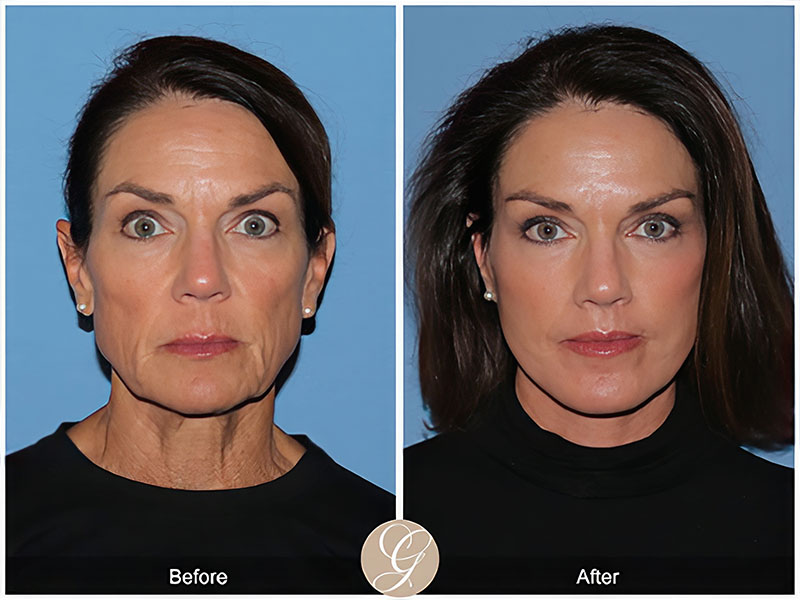
Learn about Ozempic face and the changes in facial appearance linked to rapid weight loss from Ozempic. Understand the causes, effects, and solutions to manage this phenomenon.
Introduction
Ozempic, designed initially as a medication for managing type 2 diabetes, has garnered significant attention for its side effect of promoting weight loss. As more people turn to Ozempic to shed pounds, a new term has emerged in popular discourse: “Ozempic face.” This term refers to the changes in facial appearance that can occur due to rapid or significant weight loss induced by the medication. While Ozempic has proven to be effective for weight management, the changes it can bring to one’s facial structure have raised concerns and sparked discussions about the implications of using this medication for purposes beyond diabetes management.
What Is Ozempic Face?
Ozempic face is a unique term that describes the gaunt or aged appearance some individuals experience after losing a substantial amount of weight quickly, particularly from their face. This phenomenon occurs because the face, like the rest of the body, loses fat during weight loss. However, the face is a relatively small area with limited fat, so even a slight reduction can lead to noticeable changes. The skin may sag, cheeks can hollow, and facial lines may become more pronounced, creating an older or more tired appearance. The sudden transformation can be jarring, especially for those unprepared for these changes.
The Science Behind Facial Fat Loss
To understand Ozempic face, it’s essential to delve into the science of facial fat loss. The face contains several fat compartments, which contribute to its youthful appearance. These fat pads are in the cheeks, temples, and around the eyes. When weight loss occurs, especially rapidly, these fat compartments diminish, leading to volume loss. This reduction in facial fat, combined with the natural aging process, where the skin loses elasticity, can result in a more skeletal or sunken look. The loss of collagen and elastin, proteins that help maintain the skin’s firmness, further exacerbates the appearance of sagging skin and wrinkles.
Why Does Ozempic Cause Weight Loss?
Ozempic is a brand name for semaglutide, a medication miming a hormone called GLP-1 (glucagon-like peptide-1). GLP-1 is involved in regulating appetite and insulin levels. By activating GLP-1 receptors, Ozempic helps control blood sugar levels in people with type 2 diabetes. However, it also slows down the emptying of the stomach, leading to prolonged feelings of fullness. This effect reduces overall food intake, making it easier for users to consume fewer calories and lose weight. While this weight loss benefits many, it can lead to unintended consequences, such as the development of The Face of the Olympics.
The Psychological Impact of Ozempic Face
The psychological effects of experiencing Ozempic face should be considered. For many individuals, weight loss is associated with positive changes in appearance and self-esteem. However, the sudden loss of facial fat can lead to discomfort or dissatisfaction with one’s appearance, mainly if the changes are dramatic. Some people may feel that they look older or less vibrant, negatively affecting their self-confidence. The contrast between the expected benefits of weight loss and the reality of Ozempic face can create a complex emotional response, where individuals struggle to reconcile their desire for a healthier body with the changes in their facial appearance.

Managing and Mitigating Ozempic Face
Fortunately, there are strategies to manage and mitigate the effects of Ozempic face. One approach is to lose weight at a slower pace, giving the skin more time to adjust and potentially reducing the severity of facial changes. Incorporating strength training into a weight loss regimen can also help maintain muscle mass and skin tone, supporting the facial structure. Additionally, hydrating and using skincare products promoting collagen production can improve skin elasticity. For those seeking more immediate or pronounced results, cosmetic treatments such as dermal fillers, which restore lost volume, or skin-tightening procedures may be worth exploring.
The Role of Cosmetic Interventions in Addressing Ozempic Face
Cosmetic interventions have become a popular solution for those experiencing Ozempic face. Dermal fillers, in particular, are frequently used to restore lost volume in the cheeks, temples, and other face areas. These fillers can help smooth out wrinkles and provide a more youthful appearance by replenishing the fat that has been lost. Other procedures, such as skin-tightening treatments like radiofrequency or ultrasound therapy, can stimulate collagen production and improve skin elasticity, reducing sagging. While these treatments can be effective, it’s important to note that they also come with risks and costs, so individuals must carefully consider their options and consult a qualified professional.
Comparing Ozempic Face to Other Weight Loss-Related Facial Changes
Understanding how the Olympic face compares to other weight loss-related facial changes is crucial for making informed decisions about health and appearance. Whether the weight is lost through diet, exercise, or other weight loss medications, the face is often one of the first places to show the effects. However, the term ‘Ozempic face’ has gained prominence due to the increasing use of this drug for weight loss, particularly among those who may not have initially sought it out for this purpose. This knowledge empowers individuals to make responsible decisions about their health and appearance.
The Broader Implications of Ozempic for Weight Loss
The rise of Ozempic as a weight loss aid has broader implications beyond the development of the Ozempic face. As more people turn to this medication for its weight loss benefits, it raises questions about the long-term effects and ethical considerations of using a drug for purposes outside its original intent. The potential for off-label use, where a medication is prescribed for conditions other than those it was approved for, also becomes a concern. This highlights the need for caution and awareness about the potential misuse of pharmaceutical solutions driven by societal pressures to conform to specific body standards.
Ethical Considerations of Using Ozempic for Weight Loss
The use of Ozempic for weight loss, especially in individuals who do not have type 2 diabetes, brings up important ethical questions. While the medication can be effective for weight management, its use outside of its intended purpose raises concerns about safety, accessibility, and the potential for misuse. There is also the issue of whether individuals fully understand the risks, including the possibility of developing Ozempic face, before starting the medication. Healthcare providers play a crucial role in ensuring that patients are making informed decisions and that the benefits of using Ozempic for weight loss outweigh the risks.
Public Perception and Media Representation of Ozempic Face
The term “Ozempic face” has gained traction in the media and public discourse, influencing how people perceive the medication and its effects. Media coverage often focuses on the more sensational aspects of weight loss, including the potential for drastic changes in appearance. This can shape public perception, increasing interest in the medication and heightened concern about its side effects. Understanding how Ozempic face is portrayed in the media and how it affects individuals’ medication decisions is crucial for fostering a more balanced and informed discussion about its benefits and risks.
Long-Term Effects of Ozempic Use
While Ozempic is effective for weight loss and blood sugar management, the long-term effects of using the medication are still being studied. This includes physical changes, such as the development of Ozempic face, and potential impacts on overall health. For example, the long-term use of GLP-1 receptor agonists, the class of drugs to which Ozempic belongs, has been associated with concerns about pancreatic health. However, more research is needed to understand these risks entirely. It is essential for users to be aware of the potential long-term effects and to have regular check-ups with their healthcare provider.

The Importance of Informed Decision-Making
Given the potential for significant changes in appearance and other side effects, informed decision-making is crucial when considering Ozempic for weight loss. Individuals should have a clear understanding of the benefits and risks associated with the medication, including the possibility of developing Ozempic face. Consulting with a healthcare provider who can provide personalized advice based on one’s medical history and goals is essential. Additionally, considering non-pharmaceutical alternatives for weight management, such as lifestyle changes and behavioral therapy, may be appropriate for some individuals.
How to Discuss Ozempic Face with Your Healthcare Provider
If you are considering Ozempic or are already using it and are concerned about Ozempic face, it’s important to discuss these concerns with your healthcare provider. They can provide insights into why these changes might occur and offer strategies to minimize them. This discussion should include a review of your overall health, weight loss goals, and potential alternatives if you are uncomfortable with the risks. Proactively addressing your concerns can help you make a more informed decision and ensure that your treatment plan aligns with your health and appearance goals.
The Role of Diet and Exercise in Preventing Ozempic Face
Incorporating a balanced diet and regular exercise into your weight loss plan can significantly prevent or reduce the severity of Ozempic face. A diet rich in nutrients that support skin health, such as vitamins C and E, can help maintain skin elasticity and promote collagen production. Exercise, particularly strength training, can help maintain muscle mass, which supports the facial structure and reduces sagging. Combining Ozempic with healthy lifestyle choices can improve your overall health and appearance, potentially mitigating the impact of Ozempic face.
Real-Life Experiences: Stories from Ozempic Users
Hearing from individuals who have experienced Ozempic’s face can provide valuable insights into what to expect and how to cope with these changes. Many users have shared their stories online, discussing the initial shock of seeing their facial appearance change and how they adapted. Some have turned to cosmetic treatments to restore their previous look, while others have embraced their new appearance as a sign of their weight loss success. These real-life experiences can offer encouragement and practical tips for others facing similar challenges.
The Future of Weight Loss Medications
As Ozempic continues to gain popularity for weight loss, new medications with similar effects will emerge. These future developments may offer more targeted solutions that minimize side effects like Ozempic face. Ongoing research into the mechanisms of weight loss and facial fat loss could lead to innovations that allow individuals to achieve their desired body composition without compromising their facial appearance. The future of weight loss medications will likely involve a combination of pharmaceutical advancements, lifestyle interventions, and personalized healthcare to address the diverse needs of individuals seeking to lose weight.
Conclusion
Ozempic has proven to be an effective tool for weight loss, but its drawbacks include the possibility of developing an Ozempic face. For those considering this medication, it’s essential to weigh the pros and cons carefully, taking into account both the physical and psychological effects. By staying informed, consulting with healthcare professionals, and considering all available options, individuals can make the best health and appearance decisions. Ultimately, the goal is to achieve a healthy weight while maintaining a positive self-image and overall well-being.
Read also: newssyc.in/category/dental an ultimate guide





